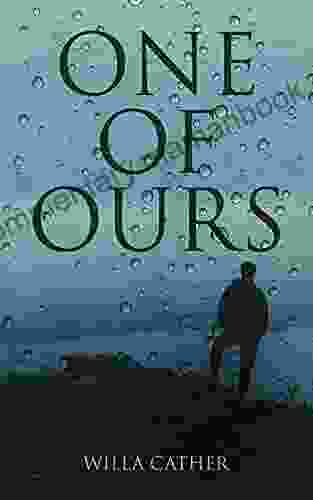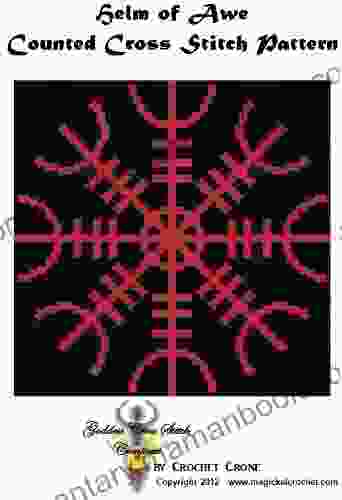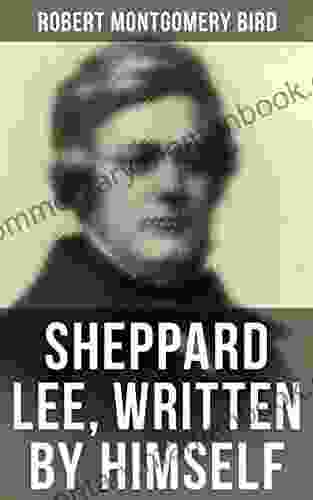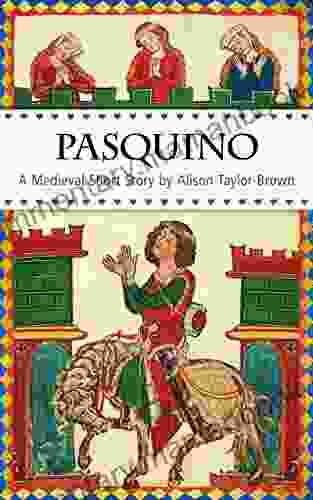Tombs of the Vanishing Indian: Unveiling the Secrets of Ancient Native American Burial Practices

Deep within the rolling hills and grassy plains of North America, there lies a testament to the ingenuity, spirituality, and enduring legacy of Native American cultures. Scattered across the continent are hundreds of earthen mounds, known as the Tombs of the Vanishing Indian. These enigmatic structures, often resembling human forms, animals, or mythical creatures, serve as sacred burial grounds and windows into the ancient world of indigenous peoples.
Origins and Cultural Significance
The construction of the Tombs of the Vanishing Indian dates back several millennia, with the earliest known examples traced to the Adena culture in the Ohio Valley around 1000 BCE. Different Native American tribes and civilizations across the continent adopted and adapted this burial practice, creating variations in size, shape, and decorative elements.
4.3 out of 5
| Language | : | English |
| File size | : | 429 KB |
| Text-to-Speech | : | Enabled |
| Screen Reader | : | Supported |
| Enhanced typesetting | : | Enabled |
| Word Wise | : | Enabled |
| Print length | : | 96 pages |
For indigenous communities, these effigy mounds were not mere burial sites; they were portals to the afterlife and symbols of the interconnectedness between humans, nature, and the spirit world. The mounds often represented specific clans or individuals, embodying the deceased's status and lineage within the tribe.
Rituals and Burial Practices
The construction of the Tombs of the Vanishing Indian was a sacred and elaborate process involving the entire community. The mounds were typically built on elevated ground or along riverbanks, providing a prominent and enduring presence in the landscape.
Before the burial, the deceased was prepared through careful rituals. Their bodies were often wrapped in animal skins or woven blankets adorned with intricate designs. Personal belongings, such as weapons, tools, and jewelry, were placed alongside the remains as offerings to accompany the individual on their journey to the afterlife.
The Rise and Demise of the Effigy Mound Culture
The construction of the Tombs of the Vanishing Indian reached its peak during the Middle Woodland period (100 BCE - 400 CE),particularly in the Ohio Valley and the Upper Mississippi River Valley. However, with the onset of the Late Woodland period (400 - 1000 CE),the building of these effigy mounds gradually declined.
The reasons for this decline are still debated among anthropologists and archaeologists. Some theories suggest that changes in climate and environment led to a shift in agricultural practices, reducing the need for the elaborate burial mounds. Others posit that the decline was related to cultural changes and the rise of new belief systems.
Archaeological Explorations
In the 19th century, the Tombs of the Vanishing Indian became a subject of intense interest for archaeologists and historians. Early excavations aimed to uncover the secrets and treasures buried within the mounds. However, these investigations were often conducted with little regard for the cultural significance and sensitivity of the sites, leading to the destruction of valuable artifacts and the disturbance of sacred remains.
Modern archaeological approaches, guided by ethical principles and collaboration with Native American communities, have focused on preserving and interpreting the Tombs of the Vanishing Indian. Archaeologists carefully excavate the mounds, utilizing techniques such as ground-penetrating radar and DNA analysis to gain insights into the burial practices, social organization, and cultural traditions of the people who built them.
Controversies and Cultural Sensitivity
The exploration and interpretation of the Tombs of the Vanishing Indian have been met with ongoing controversies and debates. In the past, these mounds were often labeled as "Indian burial grounds" or "prehistoric relics," which perpetuates a sense of detachment from the living descendants of the mound builders.
Contemporary Native American communities have expressed concerns about the excavation and display of human remains and sacred artifacts, emphasizing the importance of respecting the cultural and spiritual significance of these sites. The ethical considerations of archaeological research and the repatriation of cultural heritage have become essential elements of modern archaeological practice.
Preservation and Legacy
Today, the Tombs of the Vanishing Indian are recognized as invaluable cultural resources and protected under federal and state laws. Many of these mounds are located within national parks, state historic sites, and tribal lands, where they are preserved for future generations.
The Tombs of the Vanishing Indian stand as enduring monuments to the creativity, spirituality, and cultural diversity of Native American peoples. They offer a glimpse into the ancient world of indigenous communities and serve as a reminder of the importance of preserving and honoring their cultural heritage.
The Tombs of the Vanishing Indian are more than just archaeological curiosities; they are tangible connections to the beliefs and practices of past civilizations. They provide a window into the minds and hearts of ancient Native American peoples, showcasing their ingenuity, artistry, and deep respect for their ancestors.
By embracing ethical archaeological practices and fostering collaboration with Native American communities, we can continue to explore and learn from these enigmatic mounds, ensuring that their secrets and cultural significance are passed down for generations to come.
4.3 out of 5
| Language | : | English |
| File size | : | 429 KB |
| Text-to-Speech | : | Enabled |
| Screen Reader | : | Supported |
| Enhanced typesetting | : | Enabled |
| Word Wise | : | Enabled |
| Print length | : | 96 pages |
Do you want to contribute by writing guest posts on this blog?
Please contact us and send us a resume of previous articles that you have written.
 Top Book
Top Book Novel
Novel Fiction
Fiction Nonfiction
Nonfiction Literature
Literature Paperback
Paperback Hardcover
Hardcover E-book
E-book Audiobook
Audiobook Bestseller
Bestseller Classic
Classic Mystery
Mystery Thriller
Thriller Romance
Romance Fantasy
Fantasy Science Fiction
Science Fiction Biography
Biography Memoir
Memoir Autobiography
Autobiography Poetry
Poetry Drama
Drama Historical Fiction
Historical Fiction Self-help
Self-help Young Adult
Young Adult Childrens Books
Childrens Books Graphic Novel
Graphic Novel Anthology
Anthology Series
Series Encyclopedia
Encyclopedia Reference
Reference Guidebook
Guidebook Textbook
Textbook Workbook
Workbook Journal
Journal Diary
Diary Manuscript
Manuscript Folio
Folio Pulp Fiction
Pulp Fiction Short Stories
Short Stories Fairy Tales
Fairy Tales Fables
Fables Mythology
Mythology Philosophy
Philosophy Religion
Religion Spirituality
Spirituality Essays
Essays Critique
Critique Commentary
Commentary Glossary
Glossary Bibliography
Bibliography Index
Index Table of Contents
Table of Contents Preface
Preface Introduction
Introduction Foreword
Foreword Afterword
Afterword Appendices
Appendices Annotations
Annotations Footnotes
Footnotes Epilogue
Epilogue Prologue
Prologue Dionne D Hunter
Dionne D Hunter Rob Greenfield
Rob Greenfield Paulina Ulrich
Paulina Ulrich Naomi Kritzer
Naomi Kritzer Laurence J Brahm
Laurence J Brahm William Sharp
William Sharp Ad Putter
Ad Putter Marla Benavides
Marla Benavides Florian Zeller
Florian Zeller David Bowers
David Bowers Marilyn Tausend
Marilyn Tausend Kennedy Fox
Kennedy Fox David Barnett
David Barnett Cb Samet
Cb Samet Martin Elsant
Martin Elsant Ted Bell
Ted Bell Patrick Harris
Patrick Harris Willa Cather
Willa Cather James Gleick
James Gleick Brenda Mohammed
Brenda Mohammed
Light bulbAdvertise smarter! Our strategic ad space ensures maximum exposure. Reserve your spot today!

 Gerald ParkerThe Pulitzer Prize-Winning World War I Novel: A Masterpiece of Literature and...
Gerald ParkerThe Pulitzer Prize-Winning World War I Novel: A Masterpiece of Literature and... Kyle PowellStraight Ahead: The Rise and Fall of an American Icon, as Told by the People...
Kyle PowellStraight Ahead: The Rise and Fall of an American Icon, as Told by the People...
 Simon MitchellHelm of Awe: A Runic Symbol of Protection Embroidered in Counted Cross Stitch
Simon MitchellHelm of Awe: A Runic Symbol of Protection Embroidered in Counted Cross Stitch Francis TurnerFollow ·13.8k
Francis TurnerFollow ·13.8k Julio CortázarFollow ·2.5k
Julio CortázarFollow ·2.5k Louis HayesFollow ·7.1k
Louis HayesFollow ·7.1k Jackson HayesFollow ·4.9k
Jackson HayesFollow ·4.9k Emilio CoxFollow ·2.1k
Emilio CoxFollow ·2.1k Don ColemanFollow ·17.5k
Don ColemanFollow ·17.5k Greg FosterFollow ·16.8k
Greg FosterFollow ·16.8k J.R.R. TolkienFollow ·10.3k
J.R.R. TolkienFollow ·10.3k

 Kelly Blair
Kelly BlairSheppard Lee Written By Himself: A Journey of...
In the realm of...

 George Bernard Shaw
George Bernard ShawViper Naga Brides: Unveiling the Enthralling Fantasy...
In the realm of...

 Neil Gaiman
Neil GaimanOnce Upon a Hill in Tuscany: A Medieval Short Story
In the heart of medieval...

 Preston Simmons
Preston SimmonsBody Bereft: Exploring Loss, Love, and Legacy in Antjie...
A Poetic Requiem for the Lost:...

 Percy Bysshe Shelley
Percy Bysshe ShelleyThe Amazing Story Of Robert Smalls Escape From Slavery To...
The life of Robert Smalls is a testament to...
4.3 out of 5
| Language | : | English |
| File size | : | 429 KB |
| Text-to-Speech | : | Enabled |
| Screen Reader | : | Supported |
| Enhanced typesetting | : | Enabled |
| Word Wise | : | Enabled |
| Print length | : | 96 pages |








